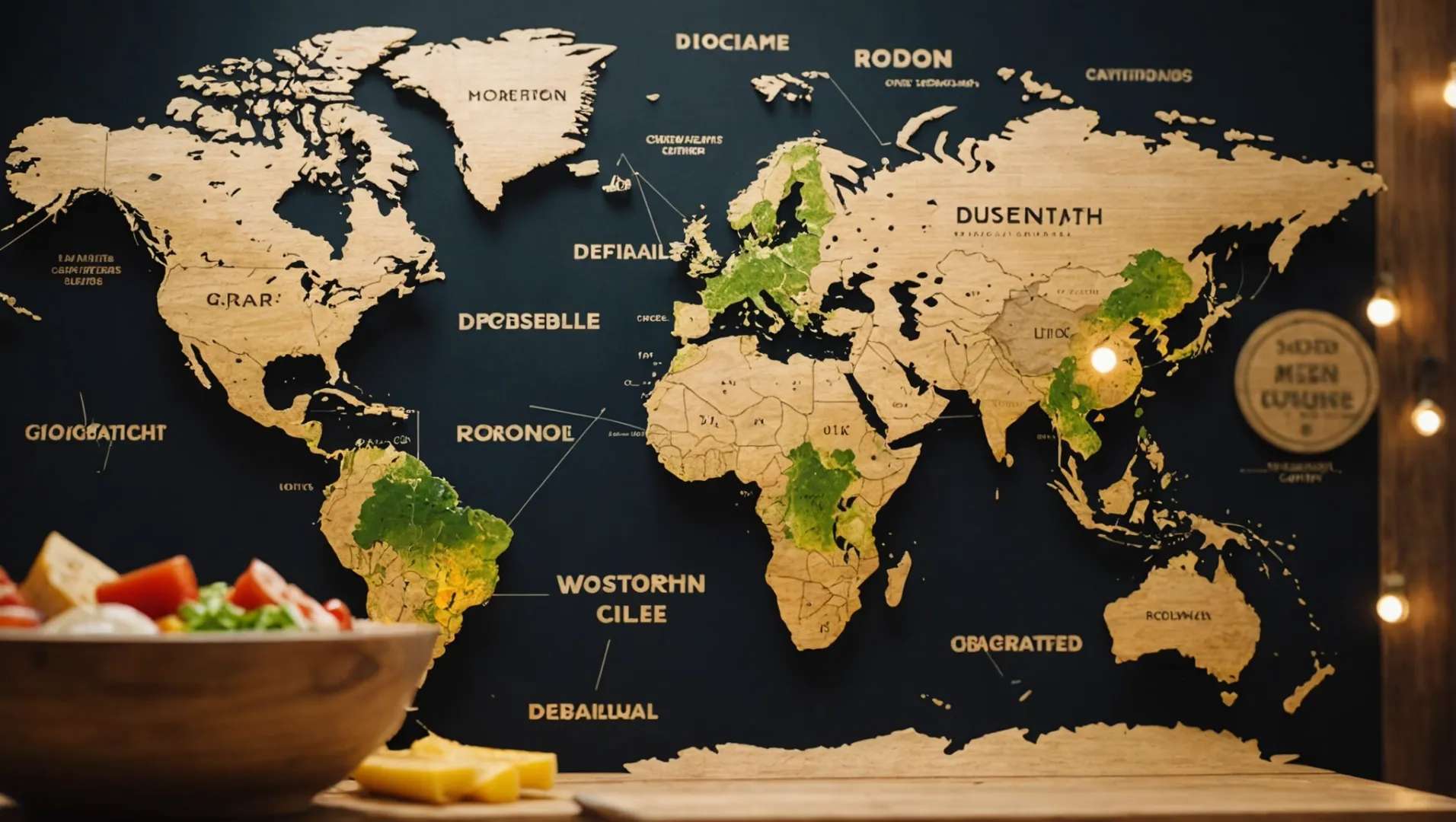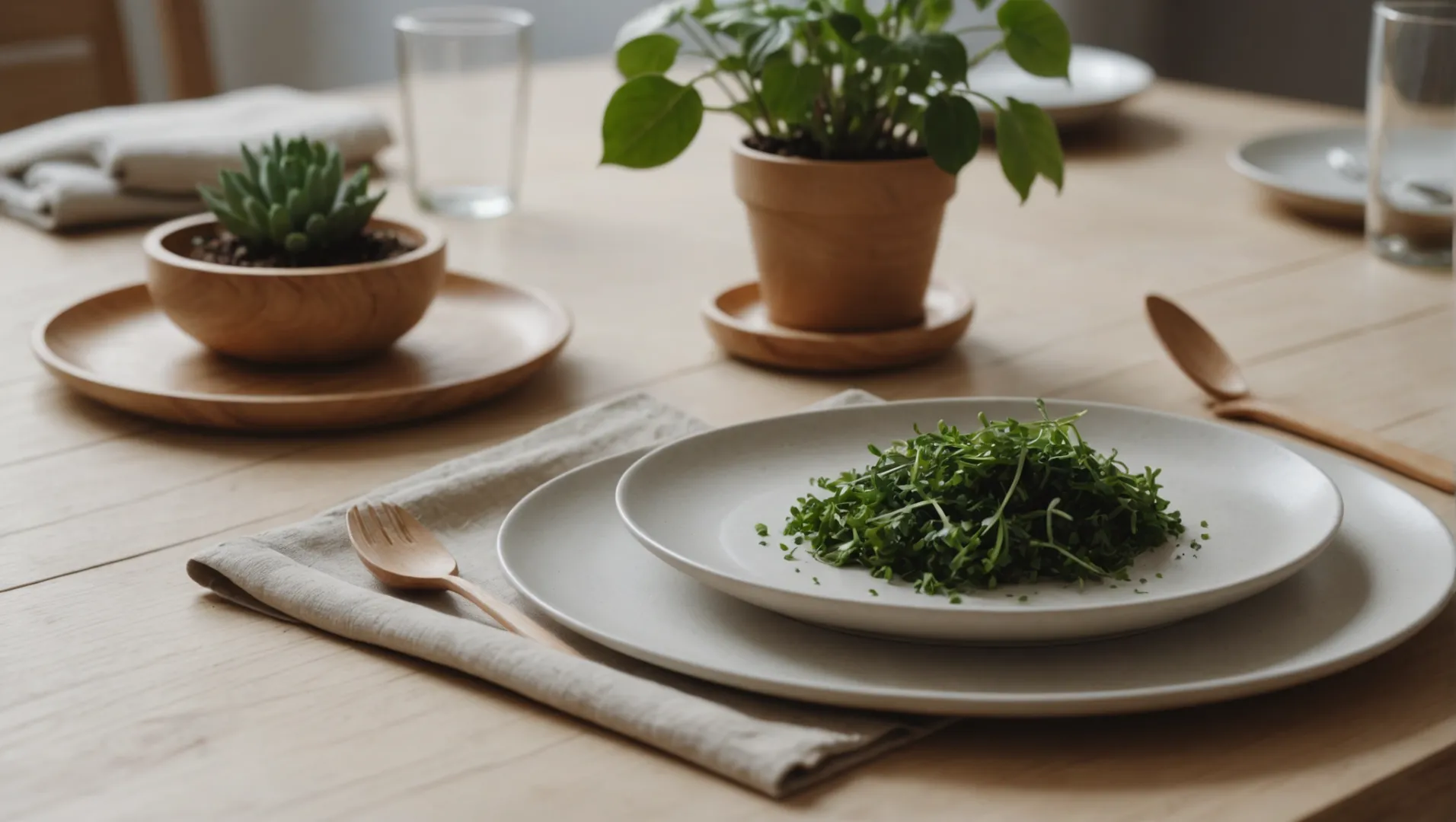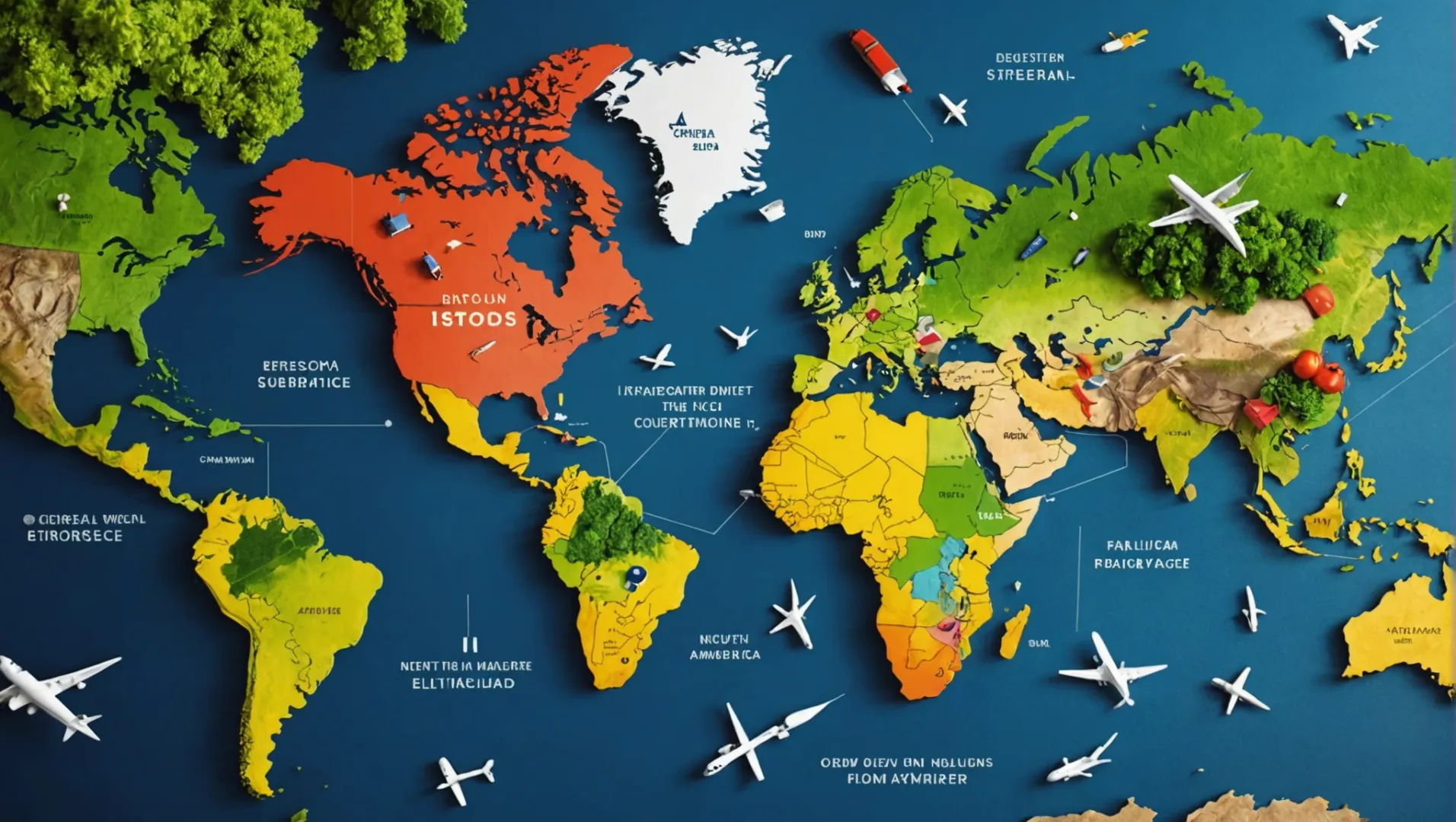
Have you ever wondered why the same product can be marketed so differently in various parts of the world?
Understanding regional variations in marketing strategies for disposable wooden cutlery is crucial for businesses looking to expand globally. Differences in consumer preferences, cultural influences, and local regulations play a significant role in shaping these strategies.
While this overview provides a glimpse into regional marketing dynamics, diving deeper reveals the intricate ways consumer behavior, regulatory frameworks, and cultural nuances influence these strategies. Let's uncover detailed insights into these regional differences.
Local regulations impact wooden cutlery marketing.True
Regulations dictate product standards and promotional content, affecting marketing.
What Role Do Local Regulations Play in Shaping Marketing Strategies?
Local regulations significantly influence marketing strategies, shaping how products like disposable wooden cutlery are promoted across different regions.
Local regulations impact marketing strategies by dictating product standards, sustainability requirements, and promotional content. Companies must adapt to these rules to ensure compliance and appeal to regional markets.

The Impact of Environmental Regulations
Local environmental regulations often dictate the materials and manufacturing processes companies can use. In regions with strict sustainability laws, such as parts of Europe, businesses must ensure their disposable wooden cutlery meets specific eco-certifications, like FSC certification1, to gain consumer trust. These certifications assure consumers of responsible sourcing, aligning with regional environmental priorities.
Regulations also push companies to innovate. For instance, in areas where single-use plastics are heavily regulated, businesses have increased the development of compostable coatings for wooden cutlery, enhancing biodegradability. Such innovations not only comply with local laws but also serve as unique selling points in marketing campaigns.
Health and Safety Standards
Health and safety regulations are another critical factor. Local laws may require cutlery to be treated with food-safe coatings to prevent bacterial growth, a common concern with porous materials like wood. For example, in North America, cutlery must often pass FDA2 guidelines to be marketed as food-safe. Compliance with such regulations ensures product safety and builds consumer confidence.
The stringent safety standards necessitate detailed marketing strategies that highlight the product's adherence to these regulations, thereby addressing consumer concerns about hygiene and health risks.
The Role of Economic Policies
Economic policies also influence how products are marketed. Import tariffs and trade agreements can affect pricing strategies, while subsidies for sustainable products can make eco-friendly options more competitive. In regions where governments offer incentives for green products, companies can leverage these benefits in their marketing strategies to appeal to cost-conscious yet environmentally aware consumers.
Cultural and Social Norms
Regulations are often shaped by cultural and social norms, which can differ significantly from one region to another. Marketing strategies must account for these differences to resonate with local audiences. In some areas, there might be a greater focus on traditional craftsmanship or local production, which could be integrated into the marketing narrative to align with consumer values.
By understanding and adhering to local regulations, companies can effectively tailor their marketing strategies to not only meet legal requirements but also connect with regional consumer expectations and preferences.
Local regulations impact product marketing strategies.True
Regulations dictate standards and requirements, shaping marketing efforts.
All regions require FSC certification for wooden cutlery.False
Only some regions, like parts of Europe, mandate FSC certification.
How Does Cultural Influence Affect Consumer Preferences?
Understanding how culture shapes consumer preferences is essential for marketers aiming to create effective strategies.
Cultural influence affects consumer preferences by shaping values, beliefs, and behaviors, impacting how products like wooden cutlery are perceived and adopted. This includes considerations of sustainability, traditional practices, and the aesthetic appeal of eco-friendly alternatives.

Cultural Values and Sustainability
Cultural values significantly impact how consumers perceive sustainability and eco-friendly products. In countries with strong environmental values, such as those in Northern Europe, there is a high preference for products like disposable wooden cutlery due to their biodegradable nature. These consumers often prioritize reducing plastic waste and seek out products that align with their ecological beliefs.
For example, Scandinavian countries3 have a long-standing tradition of valuing nature, which is reflected in their preference for natural materials and minimalistic designs. This cultural backdrop influences marketing strategies that highlight the sustainable aspects of wooden cutlery.
Traditional Practices and Product Adoption
In many cultures, traditional practices dictate consumer choices. Countries with a history of using natural materials in everyday life tend to adopt wooden cutlery more readily. In Japan, for instance, the use of natural wood in tableware is part of a broader cultural appreciation for craftsmanship and simplicity.
Marketers can leverage these traditional values by emphasizing the artisanal quality of wooden cutlery, aligning with cultural narratives that honor craftsmanship and heritage. This approach not only appeals to consumers' sense of identity but also fosters a deeper connection with the product.
Aesthetic Appeal and Modern Lifestyles
Cultural trends often define what is considered aesthetically pleasing. In societies where the aesthetic presentation is crucial, wooden cutlery's natural look may be more appealing than plastic alternatives. This is evident in regions like Italy4, where dining experiences are deeply intertwined with cultural identity and visual appeal plays a significant role.
The aesthetic value of wooden cutlery can be marketed as enhancing the dining experience, catering to consumers who appreciate both form and function. Highlighting the beauty of natural textures and colors can resonate with audiences that value elegance in everyday items.
Cross-Cultural Marketing Challenges
Navigating cultural nuances requires marketers to adapt their strategies to local preferences while maintaining brand consistency. For instance, in multicultural regions like Southeast Asia, where diverse traditions coexist, marketers must balance these influences with universal brand messages.
Creating localized campaigns that respect cultural differences is essential. This involves conducting thorough market research to understand the specific cultural drivers that affect consumer behavior. Additionally, engaging local influencers who embody cultural authenticity can enhance brand credibility and reach.
Incorporating Cultural Insights into Strategy
To effectively incorporate cultural insights into marketing strategies, companies should:
- Conduct cultural audits5 to identify key influences on consumer behavior.
- Collaborate with local experts who understand regional nuances.
- Develop flexible marketing frameworks that can be tailored to different cultural contexts.
- Leverage storytelling that resonates with local cultural narratives.
By understanding and respecting cultural differences, companies can develop more targeted strategies that resonate with diverse consumer bases, ultimately enhancing brand loyalty and market success.
Scandinavian countries prefer wooden cutlery for sustainability.True
Scandinavian values emphasize nature and eco-friendliness, favoring biodegradable products.
Japanese culture does not value natural materials in tableware.False
Japanese culture appreciates craftsmanship and simplicity, favoring natural materials.
Which Regions Show the Highest Demand for Eco-Friendly Cutlery?
As the global emphasis on sustainability grows, certain regions have emerged as leaders in the demand for eco-friendly cutlery.
Europe and North America are currently leading the demand for eco-friendly cutlery, driven by heightened environmental awareness, stringent regulations on single-use plastics, and a cultural shift towards sustainable living. These regions prioritize products that offer both functionality and environmental benefits, aligning with their growing eco-conscious consumer base.

Europe: Pioneering Sustainability
Europe stands at the forefront of the demand for eco-friendly cutlery, driven by robust regulatory frameworks like the European Union's Single-Use Plastics Directive6. This directive mandates the reduction of single-use plastic items, propelling alternatives such as wooden cutlery into the spotlight. European consumers, increasingly conscious of their environmental footprint, are actively choosing biodegradable options. In particular, countries like Germany and Sweden are recognized for their proactive environmental policies and high consumption of sustainable products.
North America: An Emerging Market
In North America, particularly the United States and Canada, there is a noticeable surge in demand for eco-friendly cutlery. This growth is fueled by increasing awareness of plastic pollution and government initiatives to curb plastic waste. For example, several U.S. states have enacted bans on plastic straws and utensils, fostering an environment where consumers and businesses seek sustainable alternatives. Moreover, the rise of green movements and advocacy groups has heightened public awareness and increased consumer willingness to pay a premium for eco-friendly products.
Asia-Pacific: A Growing Awareness
While not yet at the level of Europe or North America, the Asia-Pacific region is experiencing a gradual increase in demand for eco-friendly cutlery. Countries like Japan and South Korea are seeing a shift in consumer behavior as urban populations become more environmentally conscious. However, challenges remain in balancing economic growth with sustainable practices, as cheaper plastic alternatives still dominate in many areas.
Key Factors Driving Demand
Several factors contribute to the regional variations in demand:
- Regulations: Stringent policies on single-use plastics in Europe and North America compel businesses to offer sustainable alternatives.
- Cultural Shifts: A growing trend towards minimalism and low-waste living influences consumer choices across various regions.
- Economic Incentives: In regions with government subsidies or incentives for sustainable products, businesses are more inclined to adopt eco-friendly practices.
Table: Regional Demand for Eco-Friendly Cutlery
| Region | Key Drivers | Challenges |
|---|---|---|
| Europe | Regulatory frameworks, consumer awareness | Cost competitiveness with plastic |
| North America | State regulations, environmental movements | Varied adoption rates across states |
| Asia-Pacific | Urban consumer shifts, green initiatives | Economic constraints, lower awareness |
Understanding these regional dynamics allows businesses to tailor their marketing strategies effectively, capitalizing on local preferences and regulatory landscapes. As the trend towards sustainability strengthens globally, more regions are expected to join the demand for eco-friendly solutions in the near future.
Europe leads in eco-friendly cutlery demand.True
Europe's robust regulations and consumer awareness drive high demand.
Asia-Pacific has surpassed North America in demand.False
North America shows higher demand due to regulations and awareness.
What Are Effective Social Media Campaigns for Promoting Wooden Cutlery?
Promoting wooden cutlery on social media requires creativity and strategic planning to captivate eco-conscious audiences.
Effective social media campaigns for promoting wooden cutlery leverage storytelling, influencer partnerships, and educational content to highlight the product's eco-friendly benefits and practical uses.

Storytelling as a Tool for Engagement
Social media thrives on stories that resonate with users' values and lifestyles. For wooden cutlery, crafting a narrative around sustainability, environmental impact, and the journey from forest to table can create an emotional connection with consumers. Sharing authentic stories about the sourcing of materials or the artisans involved in crafting the cutlery can enhance brand authenticity.
For example, a campaign could follow the life cycle of a piece of wooden cutlery, from responsibly sourced wood through the manufacturing process to its eventual composting. This not only educates the audience about the product but also underscores its eco-friendly attributes.
Collaborations with Eco-Conscious Influencers
Partnering with influencers who have established credibility in sustainability and green living is another effective strategy. These influencers can authentically showcase how wooden cutlery aligns with their eco-friendly lifestyles, providing followers with relatable and aspirational content. Influencers can demonstrate practical use cases, such as hosting a zero-waste picnic or an eco-friendly dining setup, making the product more appealing.
Influencer partnerships can be further enhanced by creating exclusive discount codes or giveaways that encourage their followers to try the products themselves.
Educational Content to Drive Awareness
Educational posts that inform users about the benefits of wooden cutlery compared to plastic alternatives can drive engagement. For instance, infographics detailing how wooden cutlery is biodegradable and free from harmful chemicals resonate well with environmentally conscious audiences. Creating short video clips or reels showcasing tips on maintaining and caring for wooden cutlery ensures they last longer, adding value to the consumer's purchase.
Additionally, spotlighting certifications like FSC certification7 or FDA approval8 can enhance trust and credibility among potential buyers.
Utilizing Interactive Content
Interactive elements such as polls or quizzes about environmental impact or sustainable living can increase engagement rates. Hosting Q&A sessions where followers can ask questions about wooden cutlery's sustainability benefits or proper care can foster community and brand loyalty.
Hashtags and Trends
Leveraging trending hashtags related to sustainability, such as #ZeroWasteLiving or #EcoFriendlyDining, can broaden the reach of your campaign. Additionally, creating a unique branded hashtag encourages user-generated content, allowing customers to share their experiences and advocate for your products organically.
By integrating these strategies into a cohesive social media campaign, brands can effectively reach and engage with their target audience, turning awareness into action.
Storytelling enhances engagement for wooden cutlery campaigns.True
Narratives about sustainability and sourcing resonate with eco-conscious consumers.
Influencer partnerships are ineffective in promoting wooden cutlery.False
Eco-conscious influencers can authentically showcase the product's benefits.
Conclusion
By understanding regional strategies, businesses can effectively market eco-friendly cutlery while aligning with consumer preferences.
-
Learn how FSC certification ensures responsible forest management.: FSC certification ensures that products come from responsibly managed forests that provide environmental, social and economic benefits. ↩
-
Understand FDA guidelines ensuring product safety and consumer protection.: Under federal law, a food contact substance that is a food additive must be authorized for that use before it is marketed in the U.S. Such ... ↩
-
Learn about how Scandinavian values influence eco-friendly product preferences.: Made from renewable sources like birch, bamboo, or other sustainably harvested wood, wooden cutlery is biodegradable and compostable, making it ... ↩
-
Explore the importance of aesthetics in Italian dining culture.: Here are some tips on Italian eating etiquette for those who have just been invited to eat with an Italian. ↩
-
Discover methods for conducting cultural audits to tailor marketing strategies.: The first step to successfully conducting a cultural audit is to identify the daily management activities that occur throughout the organization ... ↩
-
Discover how EU regulations drive demand for sustainable cutlery.: EU rules on single-use plastic products aim to prevent and reduce the impact of certain plastic products on the environment, in particular the marine ... ↩
-
Learn why FSC certification enhances brand trust for eco-conscious consumers.: FSC certification ensures that products come from responsibly managed forests that provide environmental, social and economic benefits. ↩
-
Discover how FDA approval ensures product safety in food contact.: The information must demonstrate that there is a reasonable certainty of no harm to consumers when the food contact substance is proposed or ... ↩

